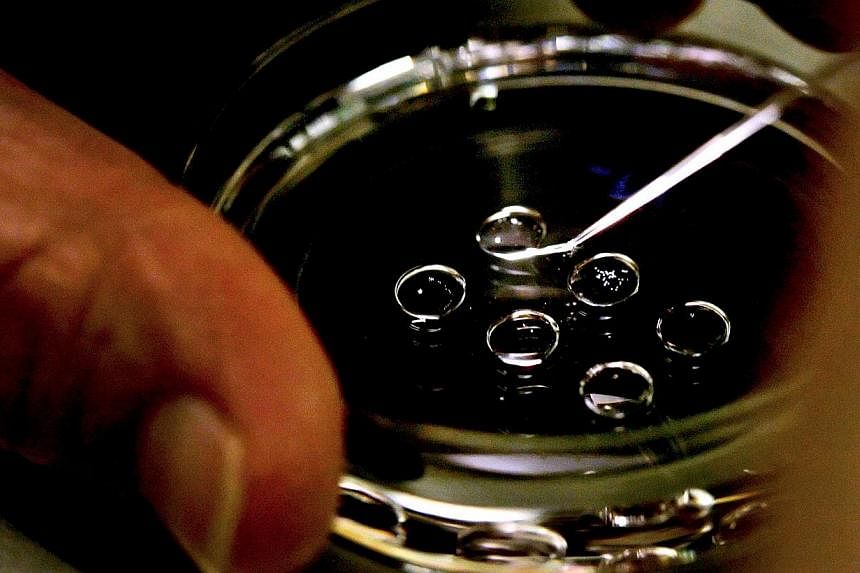The British House of Commons voted on Feb 3 to allow the use of a "three-parent" IVF technique, despite criticisms that it is a step towards designer babies.
The technique for in-vitro fertilisation (IVF) is called mitochondrial donation, and babies will have genetic material from their mother, father and a small amount of DNA from a female donor.
Britain would be the first country to approve this procedure, as it is expected to be passed in the House of Lords later this month.
Here are five things about the procedure:
1. What is mitochondrial donation?

Mitochondria occur in large numbers in most of our cells, except for red blood cells. Like little batteries, they convert food to energy needed by the body to sustain itself.
Mitochondrial donation involves replacing unhealthy mitochondria in the mother with healthy mitochondria from a donor during the IVF process.
Mitochondria have their own DNA, distinct from that in a cell's nucleus. It does not influence appearance, personality or other human characteristics, scientists say.
The baby will inherit 37 mitochondrial genes from the donor, which makes up about 0.1 per cent of the 20-000 to 30,000 genes in a cell.
2. Who does it help?
The technique stops the transmission of certain types of mitochondrial disease from mother to child. There is no cure for mitochondrial DNA disease at present.
Faulty mitochondria can cause inherited conditions such as fatal heart problems, liver failure, brain disorders, blindness and muscular dystrophy.
It is estimated the procedure can help 150 couples a year.
3. How is the procedure carried out?
There are two methods.
Maternal Spindle Transfer involves removing the nuclear DNA from the donor egg, leaving the part of the cell containing the healthy mitochondria. The nuclear DNA from the mother's egg is then inserted into this cell. The healthy egg is fertilised and is then implanted into the mother's womb.
Pronuclear Transfer involves fertilising the mother's egg first and then transferring the nuclear DNA to the fertilised donor egg containing healthy mitochondria. The fertilised egg is then implanted.
4. Why does the law have to be changed?
British law currently prohibits genetically altered human embryos from being implanted in a woman.
5. What are the arguments for and against it?
Proponents say:
- A woman with mitochondria disease will be able to have healthy offspring.
- Three scientific reviews have ruled that it is "not unsafe".
Opponents say:
- It is a step towards the slippery slope of genetic modification and the creation of designer babies.
- The DNA, although a small amount, will be passed on to future generations.
- There are still uncertainties about the technique, some scientists warn.
Sources: BBC, Lily Foundation website, Newcastle University website, Reuters

